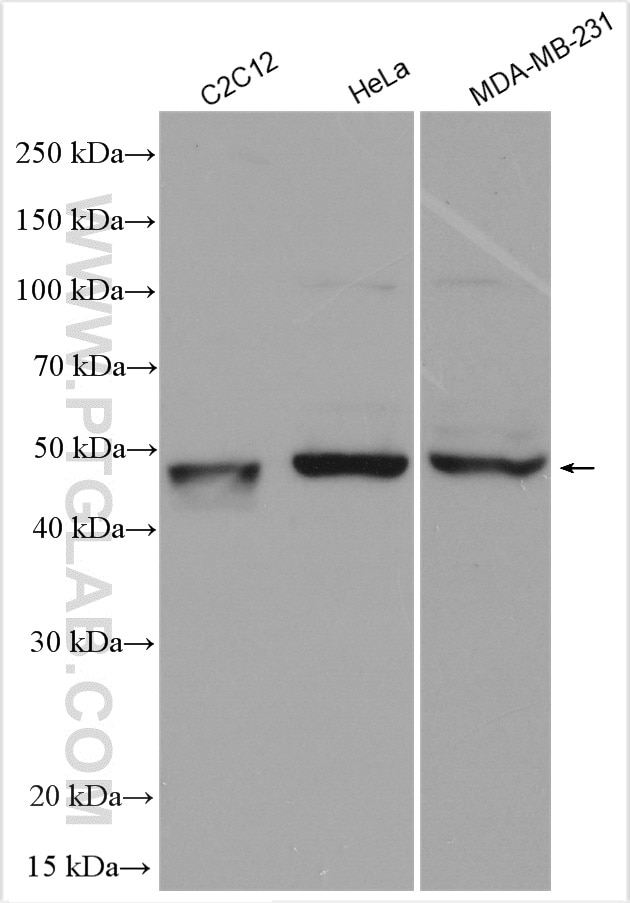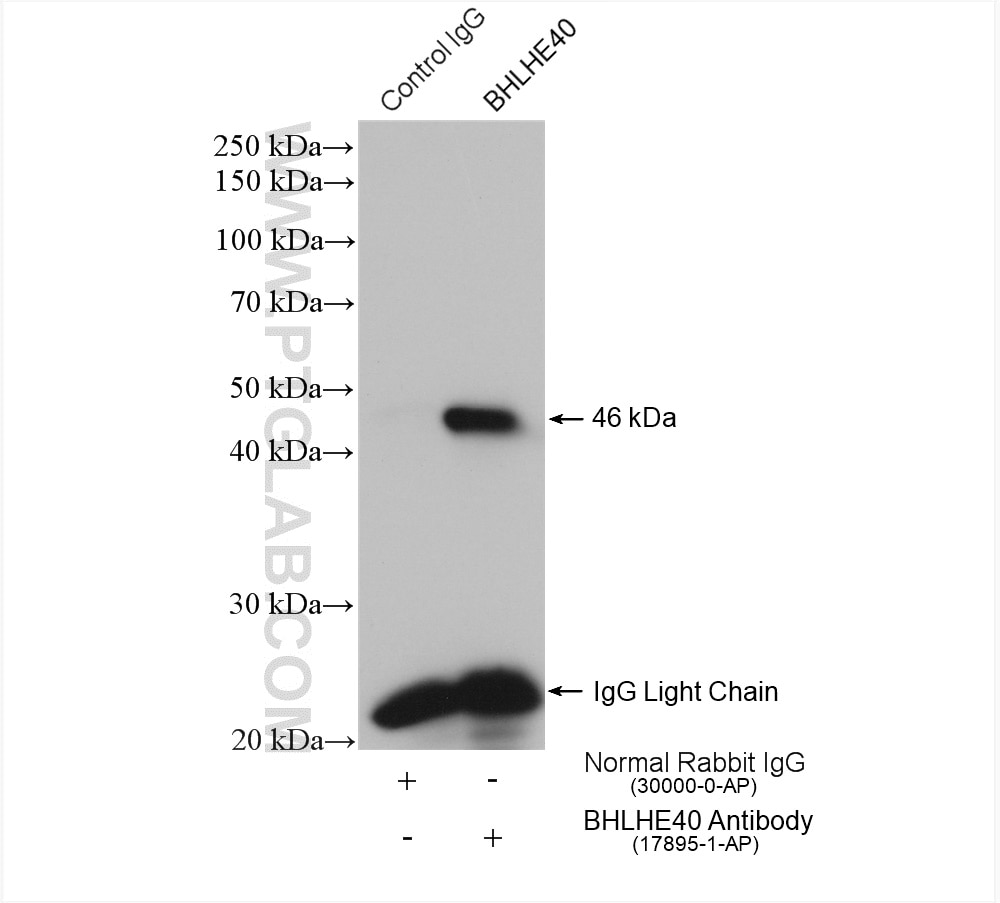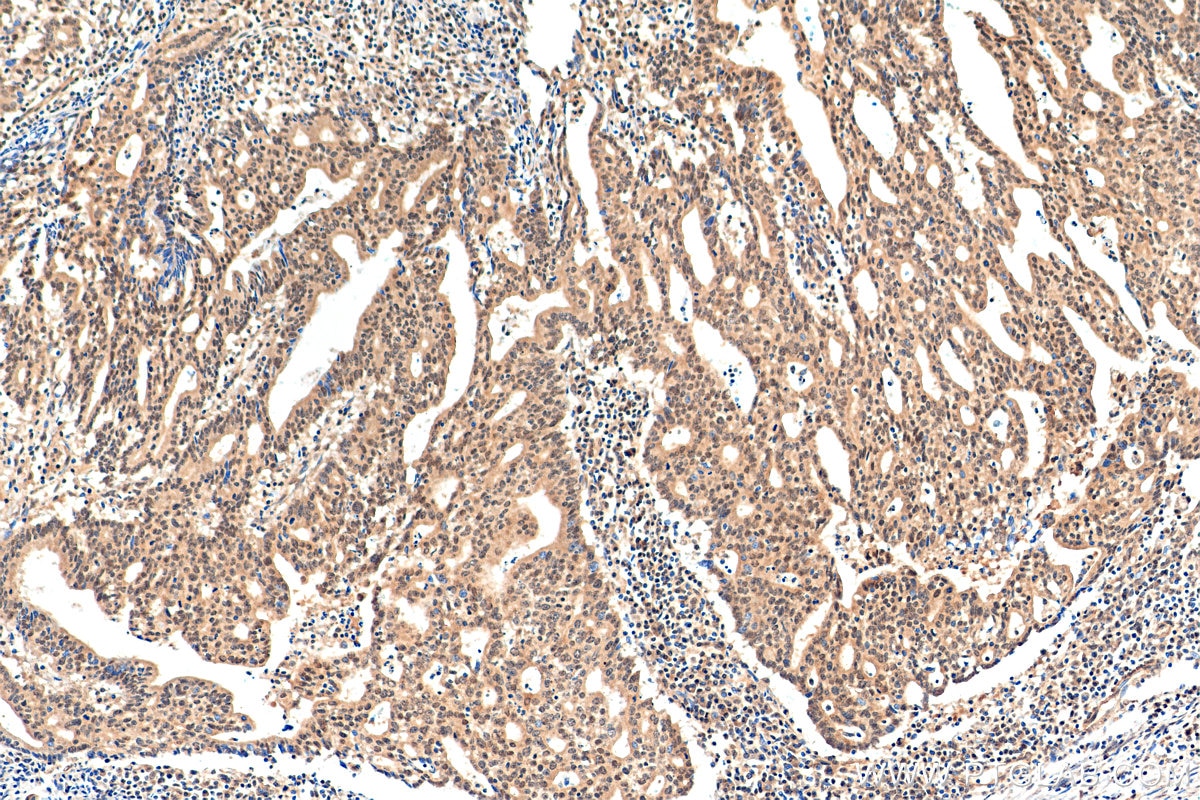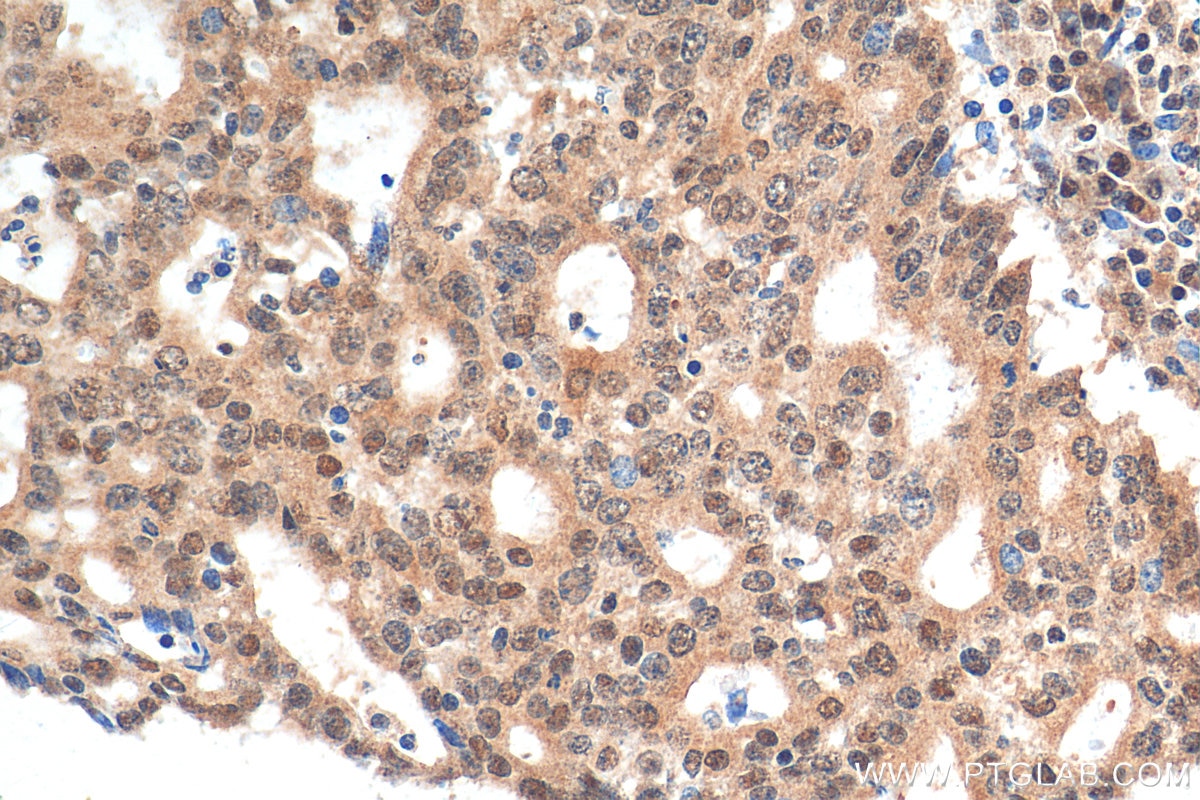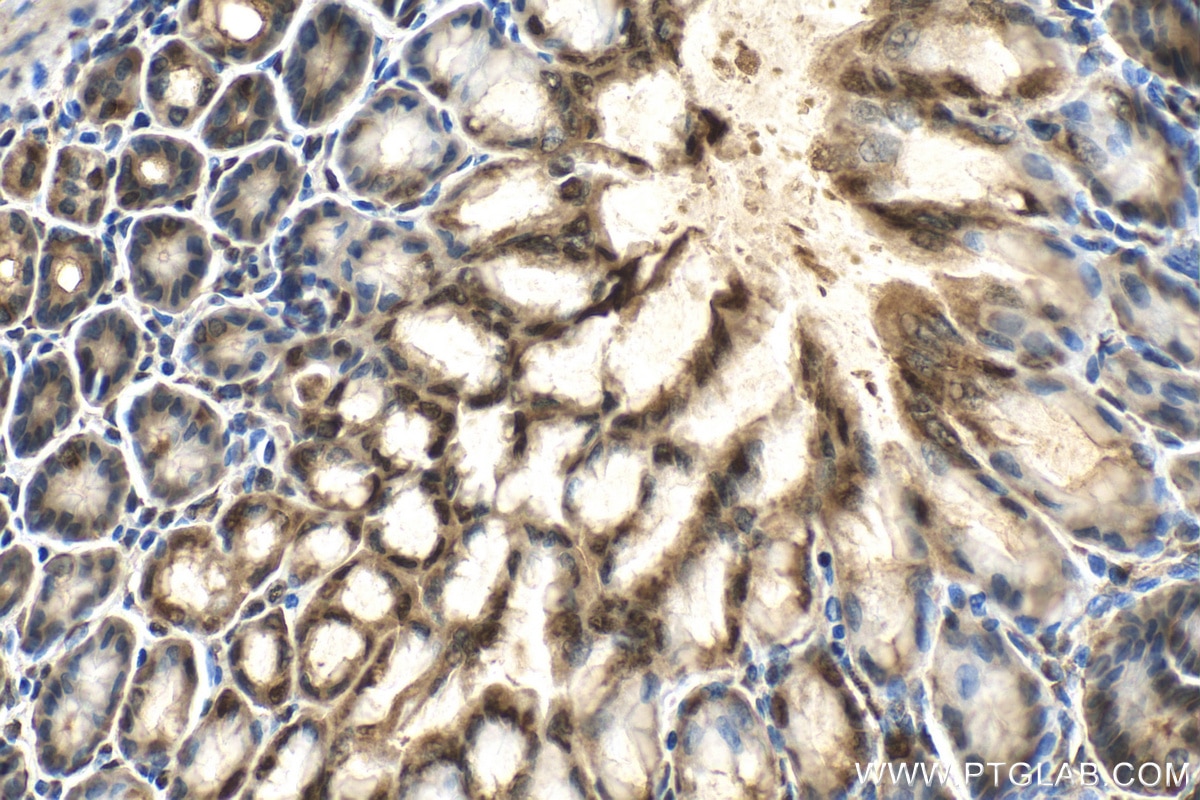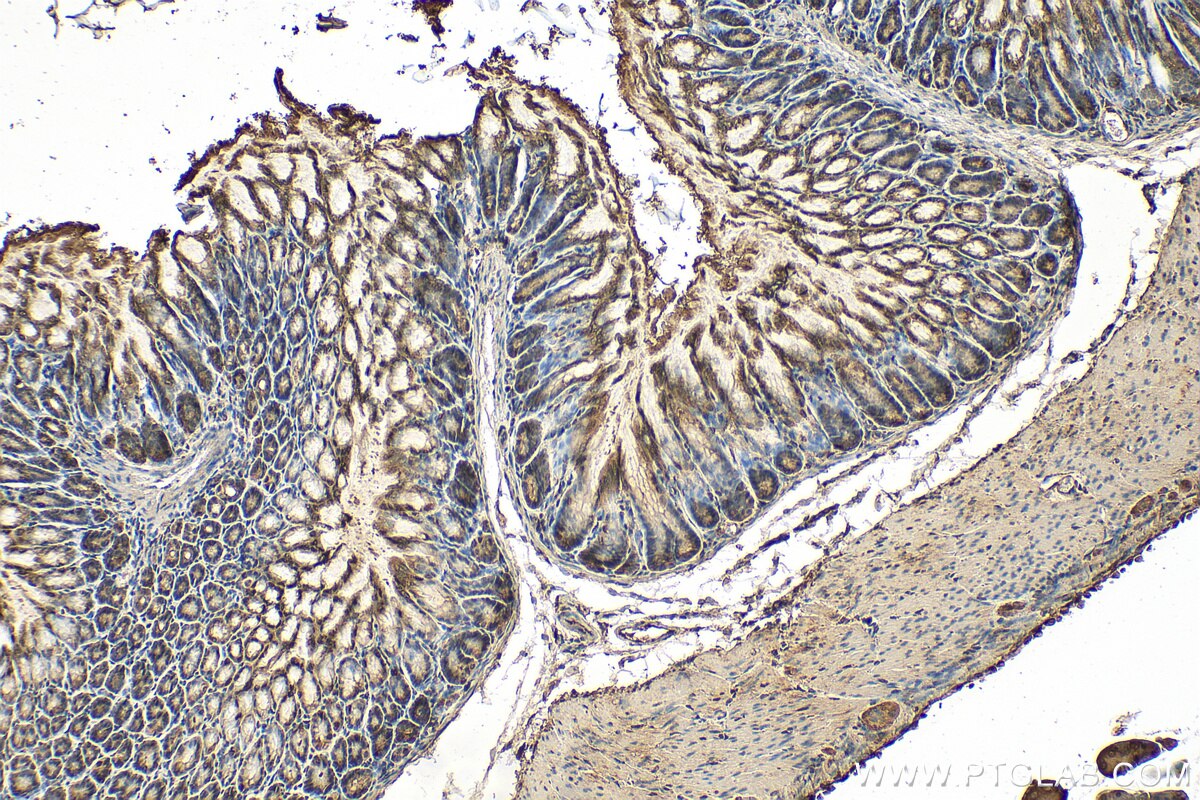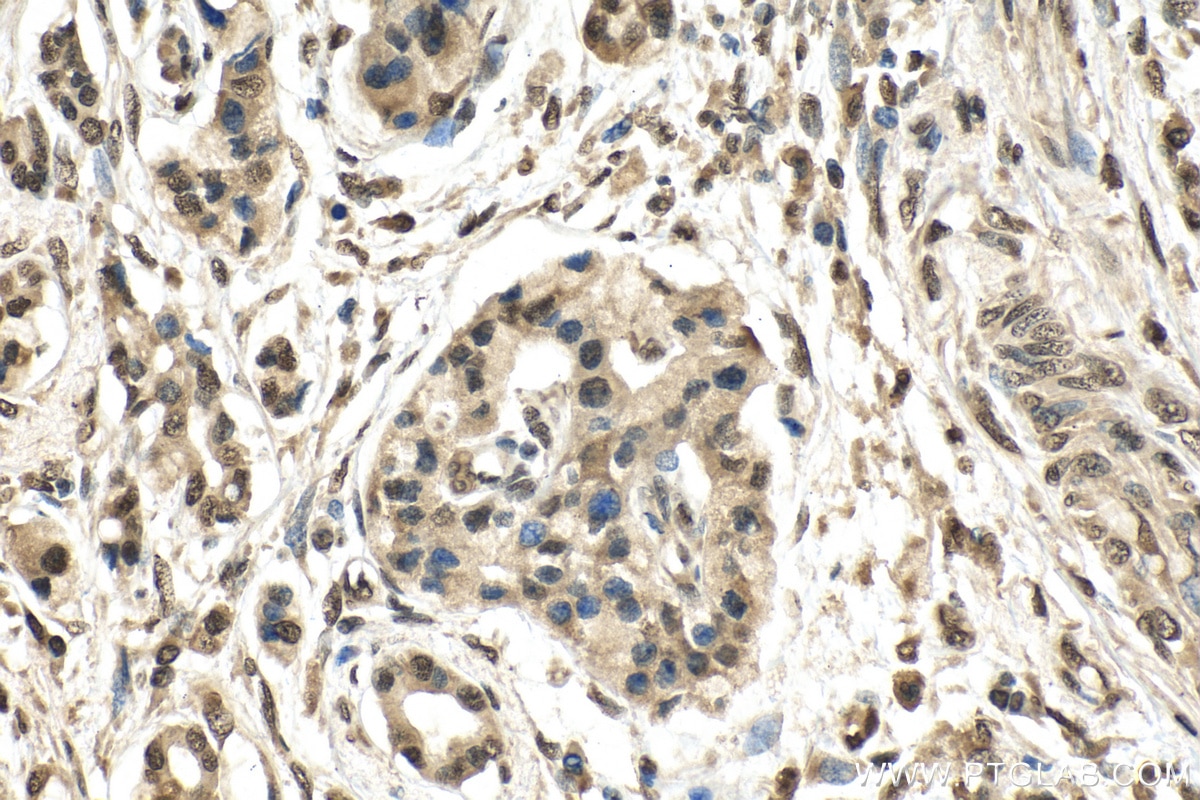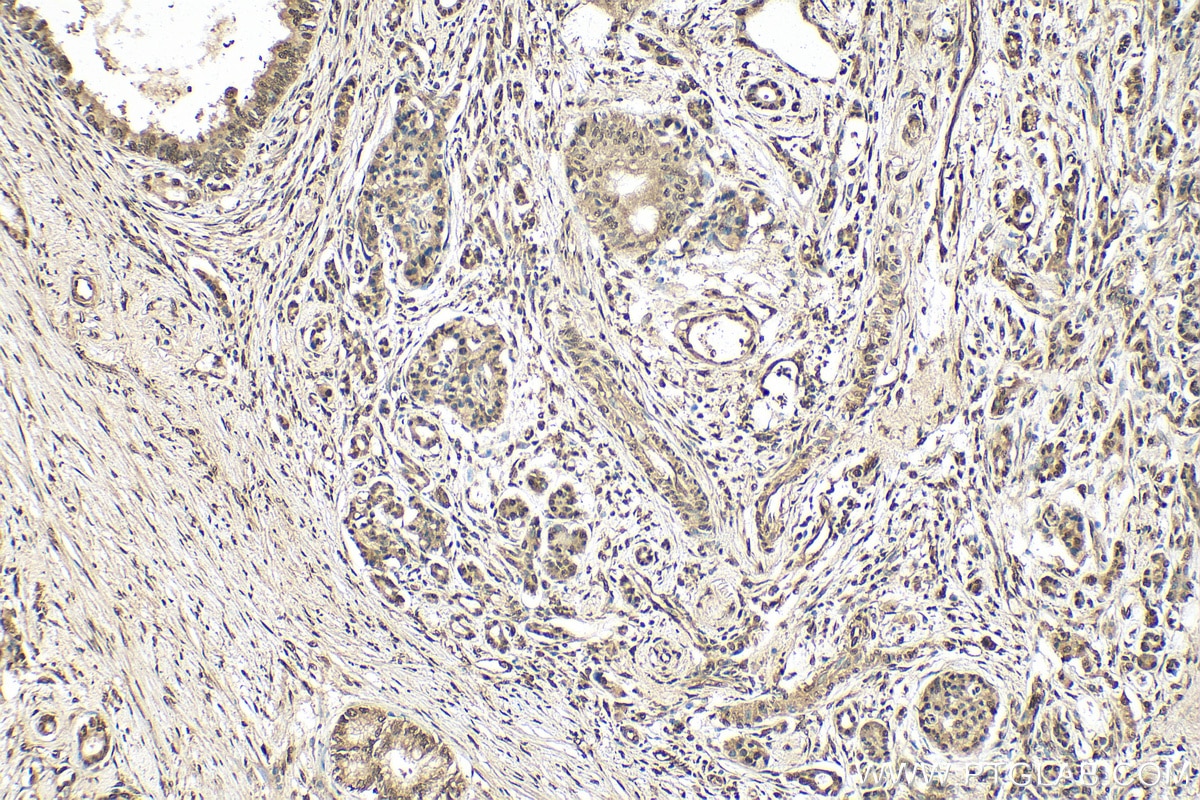Validation Data Gallery
Tested Applications
| Positive WB detected in | C2C12 cells, HeLa cells, MDA-MB-231 cells |
| Positive IP detected in | HeLa cells |
| Positive IHC detected in | human endometrial cancer tissue, human pancreas cancer tissue, mouse stomach tissue Note: suggested antigen retrieval with TE buffer pH 9.0; (*) Alternatively, antigen retrieval may be performed with citrate buffer pH 6.0 |
Recommended dilution
| Application | Dilution |
|---|---|
| Western Blot (WB) | WB : 1:1000-1:4000 |
| Immunoprecipitation (IP) | IP : 0.5-4.0 ug for 1.0-3.0 mg of total protein lysate |
| Immunohistochemistry (IHC) | IHC : 1:50-1:500 |
| It is recommended that this reagent should be titrated in each testing system to obtain optimal results. | |
| Sample-dependent, Check data in validation data gallery. | |
Published Applications
| KD/KO | See 4 publications below |
| WB | See 13 publications below |
| IHC | See 4 publications below |
| IF | See 3 publications below |
| IP | See 1 publications below |
| ChIP | See 1 publications below |
Product Information
17895-1-AP targets BHLHE40 in WB, IHC, IF, IP, ChIP, ELISA applications and shows reactivity with human, mouse, rat samples.
| Tested Reactivity | human, mouse, rat |
| Cited Reactivity | human, mouse, rat |
| Host / Isotype | Rabbit / IgG |
| Class | Polyclonal |
| Type | Antibody |
| Immunogen | BHLHE40 fusion protein Ag12236 相同性解析による交差性が予測される生物種 |
| Full Name | basic helix-loop-helix family, member e40 |
| Calculated molecular weight | 412 aa, 46 kDa |
| Observed molecular weight | 46-50 kDa |
| GenBank accession number | BC082238 |
| Gene Symbol | BHLHE40 |
| Gene ID (NCBI) | 8553 |
| RRID | AB_2065351 |
| Conjugate | Unconjugated |
| Form | Liquid |
| Purification Method | Antigen affinity purification |
| UNIPROT ID | O14503 |
| Storage Buffer | PBS with 0.02% sodium azide and 50% glycerol , pH 7.3 |
| Storage Conditions | Store at -20°C. Stable for one year after shipment. Aliquoting is unnecessary for -20oC storage. |
Background Information
BHLHE40 (Basic Helix-Loop-Helix Family Member E40), also known as BHLHB2, STRA13, DEC1, or SHARP2, is a member of the basic helix-loop-helix (bHLH) protein family, a large superfamily of transcriptional regulators expressed in many organisms. BHLHE40 is known to regulate a wide variety of essential cellular processes, including cell cycle, cellular proliferation, programmed cell death, cellular development and differentiation, as well as circadian rhythms (PMID: 34551158). It is reported that BHLHE40 is overexpressed in gastric, breast, and brain tumors; and downregulated in colorectal, esophageal, pancreatic and lung cancer (PMID: 32577154).
Protocols
| Product Specific Protocols | |
|---|---|
| WB protocol for BHLHE40 antibody 17895-1-AP | Download protocol |
| IHC protocol for BHLHE40 antibody 17895-1-AP | Download protocol |
| IP protocol for BHLHE40 antibody 17895-1-AP | Download protocol |
| Standard Protocols | |
|---|---|
| Click here to view our Standard Protocols |
Publications
| Species | Application | Title |
|---|---|---|
Front Cell Dev Biol Bhlhe40/Sirt1 Axis-Regulated Mitophagy Is Implicated in All-Trans Retinoic Acid-Induced Spina Bifida Aperta.
| ||
Ann N Y Acad Sci LncRNA-ES3 inhibition by Bhlhe40 is involved in high glucose-induced calcification/senescence of vascular smooth muscle cells. | ||
Front Cardiovasc Med 17β-Estradiol Inhibits Proliferation and Oxidative Stress in Vascular Smooth Muscle Cells by Upregulating BHLHE40 Expression.
| ||
Biochem Biophys Res Commun Loss of circadian protein TIMELESS accelerates the progression of cellular senescence. | ||
J Physiol Biochem Long noncoding RNA SNHG1 alleviates high glucose-induced vascular smooth muscle cells calcification/senescence by post-transcriptionally regulating Bhlhe40 and autophagy via Atg10 | ||
Front Cardiovasc Med Cardiac-specific knockdown of Bhlhe40 attenuates angiotensin II (Ang II)-Induced atrial fibrillation in mice |
